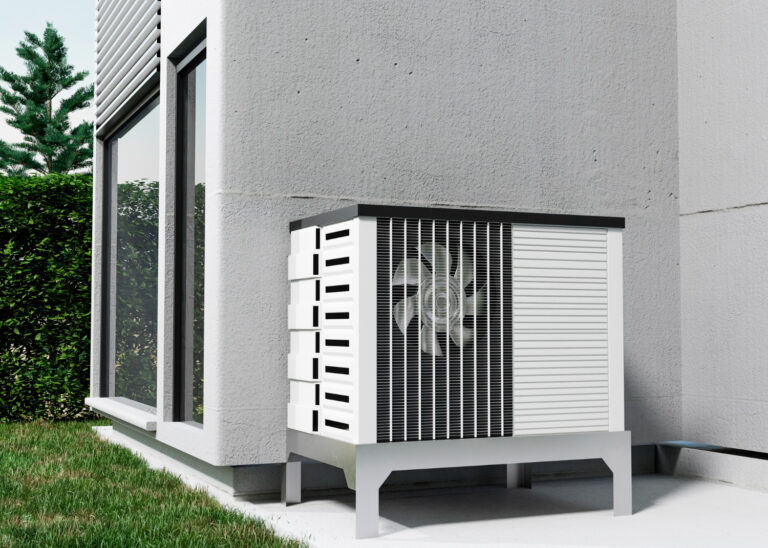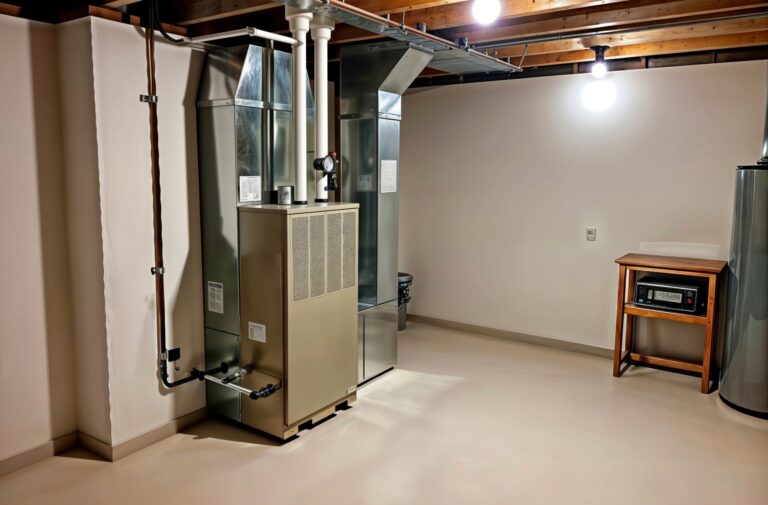
Smart Thermostats: Your Key to a More Comfortable and Cost-Effective Home
Smart thermostats are revolutionizing how we manage our home’s climate, combining smart automation with real-time data to boost comfort and slash energy bills. When hooked up to your heating and cooling system, these clever devices learn your habits, adjust settings automatically, and stop energy waste in its tracks. This guide dives into what smart thermostats are, how they work, and why they’re a smart investment for your wallet and your well-being. We’ll cover their main features, how they save energy, enhance comfort, look at top brands, the perks of professional setup, their environmental and financial upsides, and tackle common homeowner questions—all from your local Bakersfield HVAC pros, ready to help with installation and upkeep.
What Exactly Are Smart Thermostats and How Do They Operate?
Smart thermostats are connected devices that take charge of your heating and cooling by using sensors, internet connectivity, and smart algorithms to keep your home perfectly comfortable. They monitor temperature, humidity, and whether anyone’s home, then use this info to fine-tune your HVAC system instead of just sticking to a rigid schedule. This smart approach means less wasted energy and consistently comfortable temperatures.
Unlike older programmable thermostats, smart thermostats learn from your adjustments and even use outside data like weather forecasts. While programmable models need you to set specific times and temperatures, smart devices figure out the best schedule over time. This learning ability means they keep optimizing without you having to constantly tweak them. You can discover more about this with our smart thermostat services.
What Sets a Smart Thermostat Apart from a Programmable One?
A smart thermostat uses intelligent learning to adapt to your daily life, while a programmable thermostat just follows the schedule you manually set. Smart models consider your temperature preferences, your location, and even energy price changes to optimize how your system runs. Programmable ones can’t adjust if your routine changes unexpectedly. Because of this, smart thermostats usually offer better efficiency and a more satisfying user experience.
What Key Features Make Smart Thermostats So Energy Efficient?

The main energy-saving features include geofencing, learning capabilities, and remote access. Geofencing uses your phone’s location to switch to energy-saving mode when you’re away. Their learning algorithms figure out your preferred temperatures and make gradual adjustments to avoid energy spikes. With remote access via an app, you can make changes on the fly, preventing energy waste when your plans change.
Before we get into the nitty-gritty of different models, this table shows how each feature contributes to real energy savings:
| Feature | What It Does | How It Saves Energy |
|---|---|---|
| Geofencing | Switches to eco-friendly settings when no one’s home | Cuts down on heating and cooling when the house is empty |
| Learning algorithm | Adjusts the schedule based on how you use it | Smooths out temperature changes and prevents energy surges |
| Remote control | Lets you change settings from anywhere | Ensures the system isn’t running when it doesn’t need to |
These features work together to typically cut heating and cooling costs by 8–12 percent, setting the stage for a deeper look at potential savings.
How Do Smart Thermostats Connect with Your Home's HVAC System?
Getting them connected depends on compatibility with standard HVAC wiring (like 24 VAC), heat pump systems, or even line-voltage setups for electric heaters. Most smart thermostats use a “power-stealing” method or a C-wire adapter to ensure they always have power. They communicate with your furnace and air conditioner control boards just like older thermostats, but add Wi-Fi, Zigbee, or Z-Wave modules to connect to your home network.
Having a local HVAC expert install it guarantees the wiring is correct, polarity is observed, and all settings are configured for your specific system. This avoids common issues like short-cycling, error messages, or putting strain on your equipment, while also unlocking advanced features like efficient heating installation solutions and humidity control.
How Smart Thermostats Cut Energy Use and Lower Heating Bills
Smart thermostats save energy by precisely controlling temperatures, only running when needed, and using smart scheduling. By heating or cooling only when necessary, they reduce peak demand and avoid long cycles that consume extra energy. Over the course of a year, homeowners typically see lower utility bills as the thermostat balances comfort and efficiency. For more information on smart thermostats, check out Smart Thermostat Benefits.
Studies show that smart thermostats can save an average of 8 percent on heating and 10 percent on cooling. These numbers can vary based on your location, how efficient your HVAC system is, and your personal habits. In Bakersfield, with its hot summers and cool winters, smart features like adaptive setbacks and early morning pre-cooling can lower energy peaks and shift usage to cheaper off-peak hours, further reducing your bills if you have a time-of-use plan.
What Percentage of Energy Savings Can You Realistically Expect?
Homeowners can generally expect to save between 8–12 percent on their total heating and cooling costs. You’ll likely see the biggest savings in areas with significant temperature fluctuations throughout the year. Your actual savings will depend on factors like how well your home is insulated, how well-maintained your HVAC system is, and your daily routines. A properly installed and regularly serviced system will often achieve savings at the higher end of this range.
How Do Remote Control and Smart Scheduling Boost Energy Efficiency?
Remote control lets you instantly adjust your home’s temperature from your smartphone or using voice commands. This means you won’t accidentally leave your system running unnecessarily if your plans change. Scheduling allows you to set different temperature profiles for weekdays and weekends, and the smart learning feature refines these profiles automatically. Together, these capabilities prevent wasted energy when you leave earlier than usual, come home late, or simply change your mind about your plans.
What Role Does AI Learning Play in Optimizing Energy Use?
AI learning analyzes your past adjustments, weather forecasts, and when people are home to create smart schedules that anticipate your needs. By subtly adjusting temperatures towards your comfort levels just before you arrive, it minimizes the energy needed for quick temperature recovery. Over time, the system learns to recognize unusual patterns, like holidays or unexpected schedule changes, and will prompt you to make adjustments or enter vacation mode to keep saving energy.
How Does Geofencing Contribute to Energy Savings?
Geofencing uses your mobile device’s GPS to detect when the last person leaves a set area around your home. It then automatically switches your thermostat to an energy-saving mode. When you return to the area, the thermostat switches back to your preferred comfort settings. This feature can reduce energy use by up to 12 percent by ensuring your system isn’t heating or cooling an empty house for extended periods.
How Smart Thermostats Make Your Home More Comfortable and Convenient
Smart thermostats enhance comfort by keeping temperatures steady, pre-heating or pre-cooling your home before you arrive, and adapting to your personal preferences. The ability to control your thermostat remotely means your home will always be at the perfect temperature when you walk in, avoiding temperature shock and improving your overall comfort. Centralized app controls also provide humidity monitoring and equipment alerts, helping you maintain ideal indoor air quality.
What Comfort Benefits Come from Being Able to Control Temperature Remotely?
Remote access lets you change your home’s temperature from anywhere, preventing energy waste if your schedule changes and ensuring your home is comfortable when you get back. You can also receive alerts about extreme temperatures or reminders to change your air filter, allowing you to proactively manage your system’s health and your comfort without having to constantly check on things.
How Does Scheduling Adapt to Your Personal Preferences?
Scheduling features allow you to set specific temperature ranges for different times of the day, like morning, afternoon, evening, and overnight, aligning your energy use with your daily activities. Over time, smart thermostats learn from your manual adjustments and fine-tune these settings, creating a personalized comfort profile that reduces the need for constant programming while still keeping you comfortable.
Can Smart Thermostats Learn and Adjust Based on Who's Home?
Absolutely. Built-in occupancy sensors or integration with motion detectors allow thermostats to sense when someone is in a particular zone and adjust the temperature accordingly. By managing heating and cooling only in the areas where people are present, the system optimizes comfort where it’s needed most, leading to both energy savings and personalized temperature control.
Which Smart Thermostat Brands Offer the Best Features?
Several top brands offer excellent features, and your local HVAC professional can help you choose the best one for your specific system and budget. Here’s a quick look at three popular options:
| Thermostat Brand | Standout Feature | What It Means for You |
|---|---|---|
| Nest | Learns your schedule automatically | Saves energy progressively without you needing to do anything |
| Ecobee | Works with room sensors | Ensures consistent comfort in different areas of your home |
| Hive | Simple app interface | Easy to control and monitor your home’s temperature remotely |
In Bakersfield, local installation experts often recommend Nest thermostats for their wide compatibility and powerful learning features. Ecobee devices are great for homes with uneven heating because of their extra sensors. Hive is a good choice for those who want straightforward control and an easy setup process.
Why Opt for Professional Installation and Maintenance for Your Smart Thermostat?

Having a qualified HVAC specialist install your smart thermostat ensures all the wiring is done correctly, sensors are placed optimally, and your system is configured precisely. Experienced installers are familiar with all types of HVAC control systems—furnaces, heat pumps, and split systems—and can prevent common issues like short-cycling or compatibility problems. They’ll also advise on the best location to avoid inaccurate readings from drafts or direct sunlight.
What Are the Advantages of Expert Smart Thermostat Installation in Bakersfield?
Local technicians understand the specific climate challenges in Bakersfield and can set up your smart thermostat to handle hot afternoons and cool evenings effectively. Proper installation minimizes the chance of system errors, maximizes your warranty coverage, and enables advanced features like dual-fuel management. This local expertise ensures your system performs at its best and delivers reliable energy savings.
How Does Professional Maintenance Keep Your Thermostat Working Well for Longer?
Annual check-ups involve updating firmware, calibrating sensors, and verifying that the thermostat and HVAC equipment are communicating properly. Regular maintenance prevents connection issues, software glitches, and wear and tear that can affect both your comfort and your savings. A well-maintained smart thermostat will continue to provide efficiency benefits for years to come.
What Common Problems Can HVAC Experts Fix?
Technical issues like a missing common wire, unreliable Wi-Fi connections, or incorrect system type settings can prevent smart thermostats from working correctly. Certified technicians can diagnose wiring problems, replace necessary adapters, and adjust control settings to get your thermostat working perfectly again. Their expertise helps you avoid DIY mistakes that could lead to poor performance or damage to your equipment.
What Are the Environmental and Financial Perks of Using Smart Thermostats?
Smart thermostats help reduce your carbon footprint by cutting down on unnecessary heating and cooling and by shifting energy use to off-peak times. Using less electricity and gas directly translates into lower monthly bills. When you factor in potential rebates for energy-efficient upgrades available in California, the investment can pay for itself in just two to three years.
How Do Smart Thermostats Reduce Our Carbon Footprint and Environmental Impact?
By only running your heating and cooling systems when they’re actually needed, smart thermostats decrease the overall demand for fossil fuels and electricity. Smart scheduling also reduces peak energy demand, which allows utility companies to rely less on power plants that generate more emissions. If many homes adopted smart thermostats, it could significantly cut residential HVAC emissions nationwide.
Are There Local Rebates and Incentives for Smart Thermostat Installation in Bakersfield?
California’s energy efficiency programs often include rebates for approved smart thermostats when they’re installed by professional technicians. These incentives can significantly lower the upfront cost of upgrading your old thermostat, encouraging more homeowners to make the switch. You’ll need to check with your local utility providers for the most current program details and eligibility requirements.
How Can You Calculate Your Return on Investment (ROI) with a Smart Thermostat?
To figure out your ROI, compare the initial cost of installation with the estimated annual energy savings. For instance, if a smart thermostat installation costs $200 and leads to a 12 percent reduction on a $1,200 annual HVAC bill, you’d save $144 per year. At that rate, the thermostat would pay for itself in less than 18 months, and all subsequent savings would be pure profit.
What Are the Most Common Questions About Smart Thermostats?
- The value proposition: Homeowners often wonder if the energy savings and comfort improvements are worth the initial cost.
- Connectivity concerns: Potential buyers want to know if a constant Wi-Fi connection is essential and how the thermostat operates without it.
- Understanding limitations: People are curious about sensor accuracy, privacy issues, and how much of a learning curve there is.
- Integration possibilities: There’s a lot of interest in how smart thermostats work with other smart home systems like Google Home, Amazon Alexa, and other home automation platforms.
These questions highlight the need for clear information on cost justification, reliable operation, user-friendly convenience, and compatibility. Addressing them helps ensure homeowners feel confident when choosing and installing a smart thermostat.
Smart thermostats offer a fantastic combination of automated efficiency, personalized comfort, and long-term savings. Their ability to learn your habits, adapt in real time, and integrate with your home’s systems makes them a must-have upgrade for modern homes and businesses. Professional installation and maintenance from your local HVAC experts ensure peak performance, and available rebates can speed up the return on your investment while benefiting the environment. For personalized advice or to schedule a smart thermostat consultation, contact a trusted Bakersfield specialist today.






